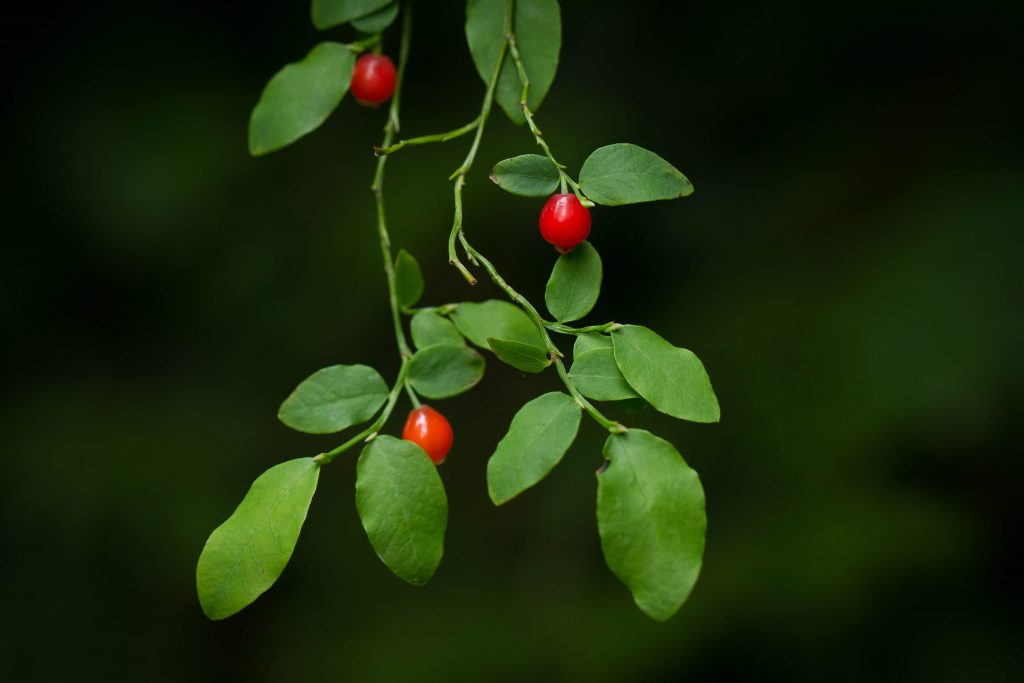Family: Ericaceae
Common name: Red huckleberry
E-flora BC: https://linnet.geog.ubc.ca/Atlas/Atlas.aspx?sciname=Vaccinium%20parvifolium
Wikipedia: https://en.wikipedia.org/wiki/Vaccinium_parvifolium
Red huckleberry is a member of the family Ericaceae. Other species belonging to this family and listed on this site are salal (Gaultheria shallon), arbutus (Arbutus menziesii) and kinnikinnick (Arctostaphylos uva-ursi). Compare the flower morphology of these species to note their kinship in the family Ericaceae.
We usually find red huckleberry in openings in the forest, e.g. along trails or at edges. It grows alongside Douglas-fir (Pseudotsuga menziesii), western hemlock (Tsuga heterophylla) and western redcedar (Thuja plicata). It seems to prefer soils with high organic matter and sometimes grows out of old rotting stumps or logs.
Red huckleberry is a spindly shrub, usually around 1.5-2 m tall. Its distinguishing characteristics are its delicate leaves and green, ridged twigs.
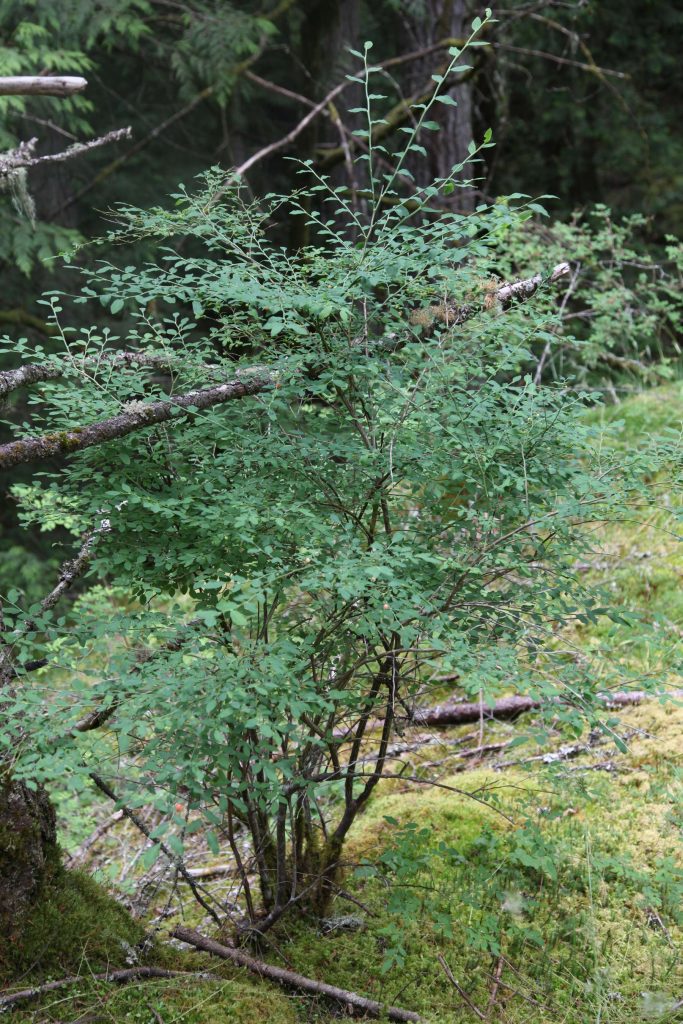
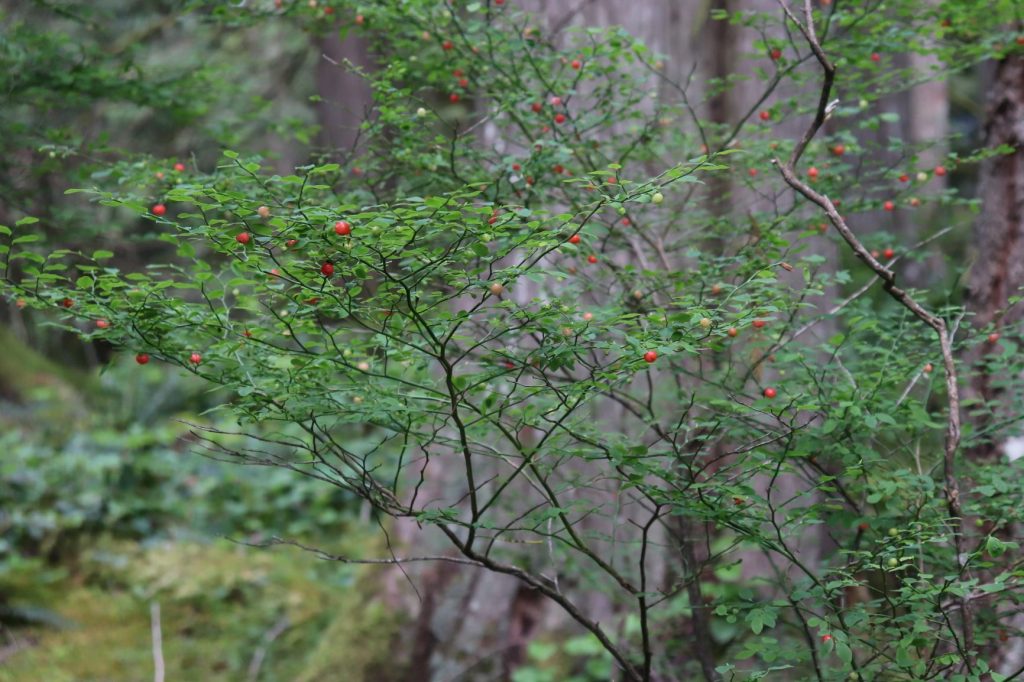
The species epithet ‘parvifolium’ is descriptive: parvi = (Latin) small, folium = (Latin) leaf, referring to the small, delicate leaves.
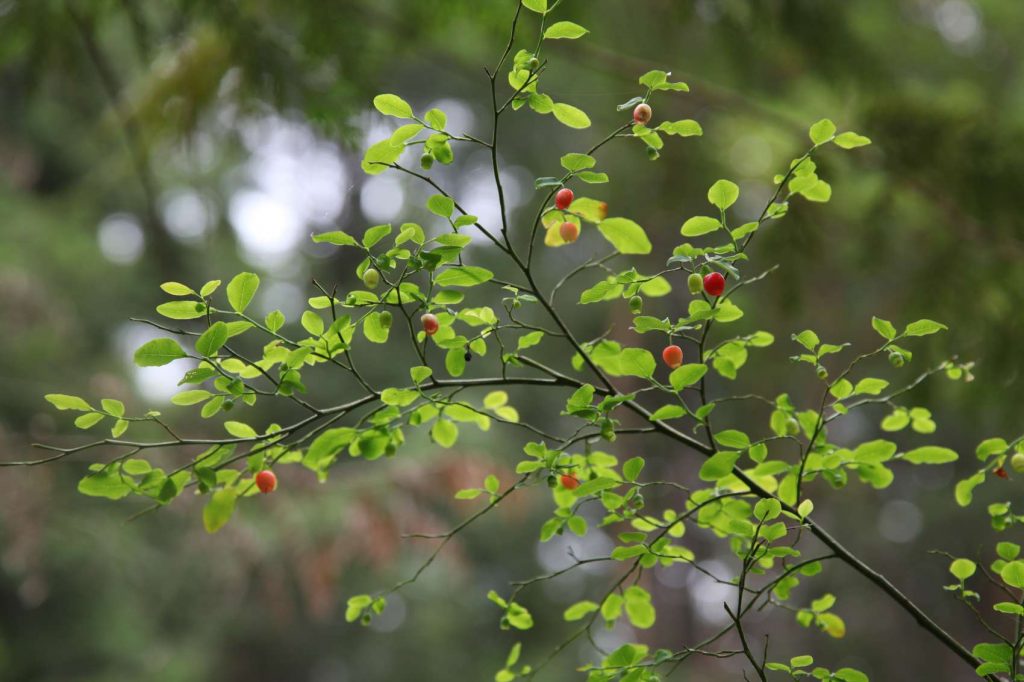
The twigs of red huckleberry are angular and often look a bit kinked. Leaf arrangement along the stem is alternate. If one is not paying attention, one could get red huckleberry mixed up with snowberry (Symphoricarpos albus), but snowberry has leaves arranged in an opposite pattern, and smooth straight stems.
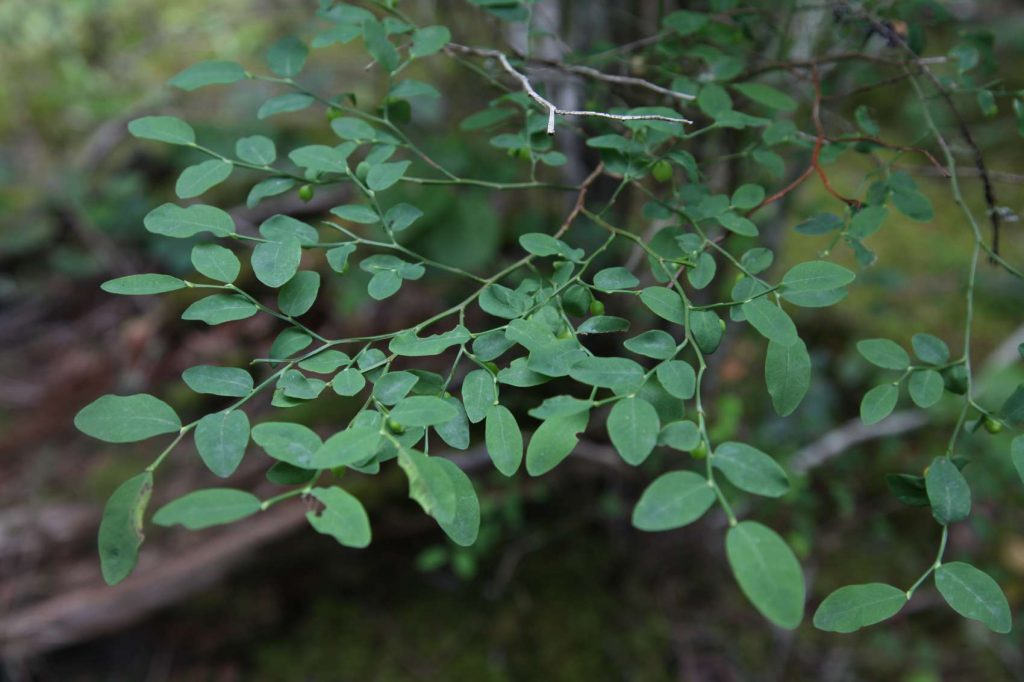
A good way to confirm that you’re dealing with red huckleberry, and not snowberry, is to inspect the twig. Snowberry has smooth round twigs, while red huckleberry twigs have distinctive sharp ridges. If you can roll the twig between your fingertips, the ridges become obvious.
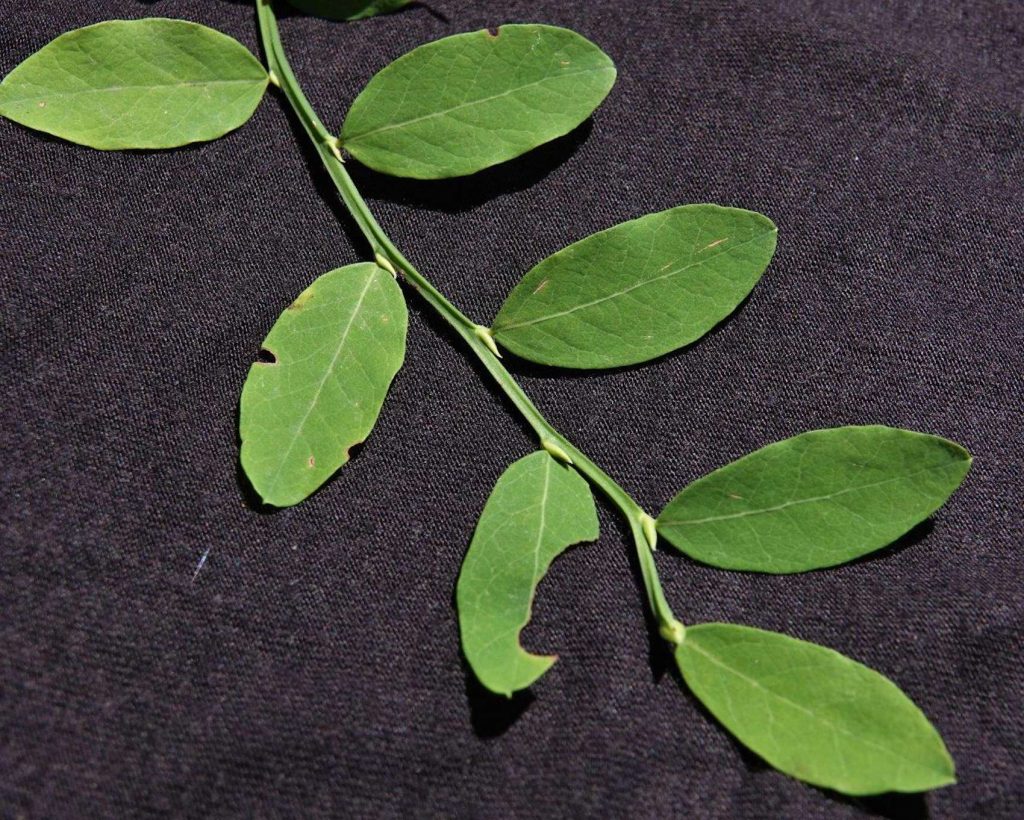
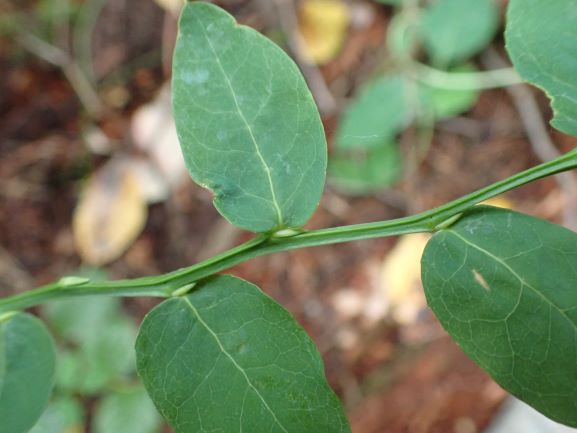
Red huckleberry flowers are typical of the Ericaceae family – drooping and urn-shaped. Compare the flower morphology to that of the relatives salal (Gaultheria shallon), arbutus (Arbutus menziesii) and kinnikinnick (Arctostaphylos uva-ursi).
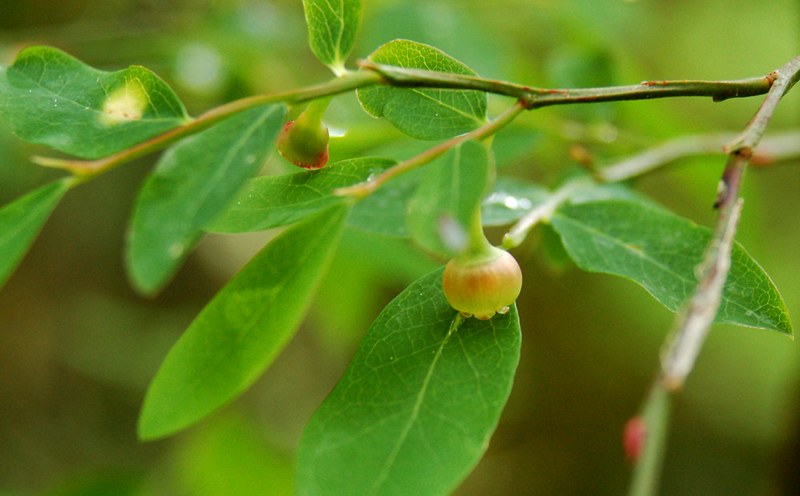
The fruit of red huckleberry resembles the fruit of other huckleberries and blueberries – a juicy globular berry. These tart berries have traditional uses as food and are collected in large quantities – either for fresh eating or processing for winter storage.
